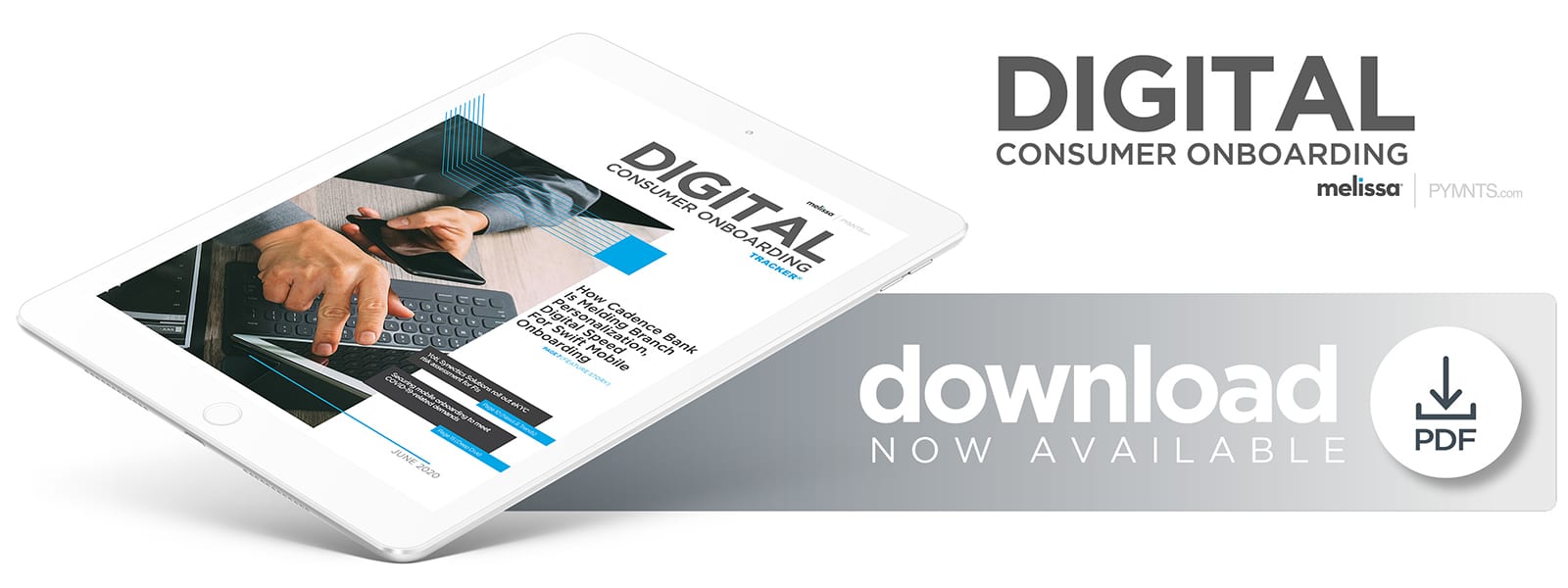Deep Dive: How FIs Can Secure Mobile Onboarding Without Adding Frictions

The need to stay at home and minimize person-to-person contact during the COVID-19 pandemic has pushed mobile banking use into overdrive. Customers are unable or unwilling to visit bank branches, instead using apps to conduct their financial activities and generating an 85 percent rise in mobile banking activity in April.
Offering full-featured digital channels is therefore a must for financial institutions (FIs) looking to give customers smooth access to banking services — and it is poised to become a competitive advantage. A recent survey found that 40 percent of respondents expect to bank in person at branches once it becomes safe to do so, implying that the remaining 60 percent may cling to digital services. FIs that already provided mobile options were well-positioned to manage consumers’ and businesses’ finances during the pandemic, but others have had to look beyond their existing relationships to offer digital services. That may be why April also saw 200 percent growth in new account openings made via mobile.
FIs have long been aware that many customers consider mobile offerings compelling, with research from 2019 finding that the channel especially appeals to younger consumers. According to the report, 82 percent of those between the ages of 18 and 24 bank exclusively through mobile channels, for example. Members of this age group are moving into the workforce in growing numbers, making them a progressively influential demographic for FIs.
Digital’s appeal to younger users has not been enough to push all FIs to offer comprehensive mobile banking services, however. Many banks do not allow fully digital onboarding, even if they provide other app-based services like remote check deposit or account status viewing. One survey found that 56 percent of FI respondents offered digital account opening, while the rest did not or reported being in the process of enabling such services. Some of the latter group said customers would still have to visit branches to finish processes that were started on digital channels, though, and some would have to do so for the entire onboarding experience.
Processes that depend on person-to-person interactions have been especially challenging during the COVID-19 pandemic, as consumers and employees are striving to minimize spread and exposure. This has increased the need for FIs to develop convenient mobile onboarding experiences, but those that lack confidence in their ability to secure such channels appear to be reluctant to offer them. This month’s Deep Dive examines how FIs’ concerns about providing secure, convenient enrollment have held them back from mobile onboarding, and details the KYC strategies that could help alleviate those pain points.
Balancing Ease And Safety
FIs must offer in-demand service channels or risk seeing their customers defect to competitors. Getting the mobile experience right can be tricky, however, and various inconveniences have impeded users’ experiences for years. A 2017 study found that 85 percent of bank respondents did not enable customers who started onboarding on one channel to continue the process on another, for example. These users had to restart the process from the beginning if they switched channels.
This can create major speed bumps and frustrations, as consumers typically have little patience for slow services and are often quick to abandon the digital offerings they find inconvenient. A 2018 study found that more than 50 percent of U.K. consumers had given up trying to enroll with an FI, with 34 percent saying they abandoned the process because it was too slow and 40 percent abandoning it because they were asked to provide more personal details than they were comfortable offering. Customers can also become frustrated with mobile enrollments that require them to manually key in multiple information fields, which can be time-consuming and cumbersome.
FIs cannot simply do away with gathering customer information to ease onboarding, though. They need to thoroughly vet new customers and comply with security obligations to prevent crime from proliferating. Banks cannot risk enrolling individuals who will use their accounts to fund organized crime and terrorism, and must employ robust strategies to detect would-be customers who are actually criminals using stolen credentials.
Tapping Mobile KYC
FIs can find it difficult to take care of public safety requirements while ensuring seamless enrollment, however. Swift-yet-secure mobile banking onboarding may require technologies that spare customers from typing in their details, for example, which otherwise takes time and can result in manual errors. Many mobile KYC processes require customers to photograph their government-issued IDs using their smartphone cameras, with FIs’ platforms extracting the necessary identity data from the images. Customers may also be asked to take selfies that can be compared to images depicted on the IDs to prove legitimacy.
Such processes provide much faster experiences than asking customers to mail or hand over paper documents, both of which involve lengthy waits for documents to reach bank staff, when they must be sorted and inputted. Stay-at-home directives and work-from-home operations could mean that fewer personnel are in physical offices to accept paper submissions, and those that are may be wary to do so, as some reports say traces of COVID-19 can linger on paper. The Centers for Disease Control and Prevention (CDC) currently recommends that individuals wash their hands as a precaution after collecting mail.
FIs have long considered how to enable secure mobile onboarding, and the pandemic has pressured them to offer such services. Digital services make it easier for consumers and banks to engage and create new relationships, both during the pandemic when public health safeguards discourage face-to-face onboarding interactions and within normal operations. It may also spare customers from inconveniences like manual data entry and longer-than-necessary processing waits, creating swifter overall onboarding experiences and granting faster access to funds.
Fraud is always a concern, however — especially when more business is now being completed online — and consumers cannot afford to have their safety put at risk by banks that accidentally onboard criminals. Customers also need easy access to financial services, and FIs that offer tools like selfie-based mobile KYC may be better able to thread this needle. Those that offer convenient and secure mobile experiences during the pandemic will make this stressful time a little easier, likely building deeper loyalty that will last for years to come.

